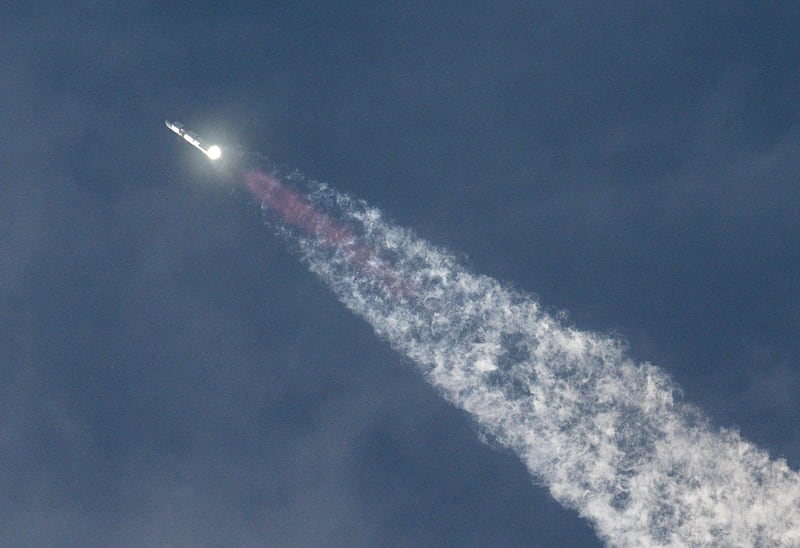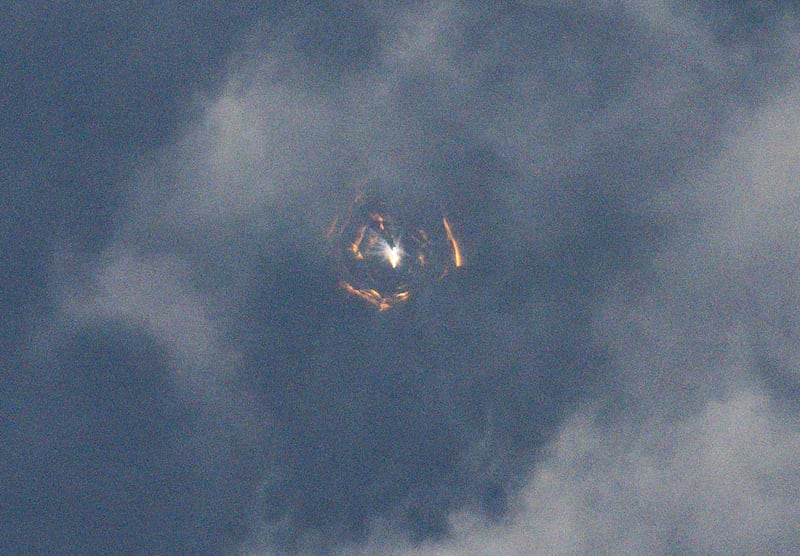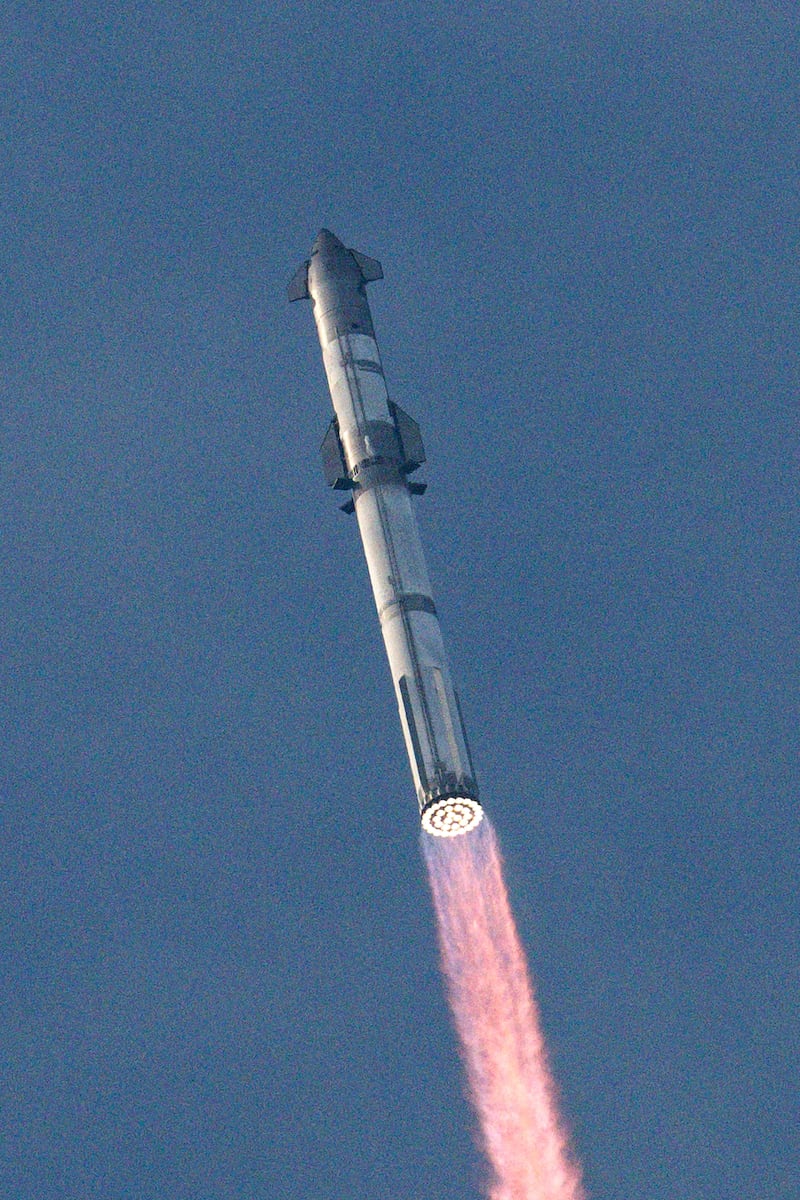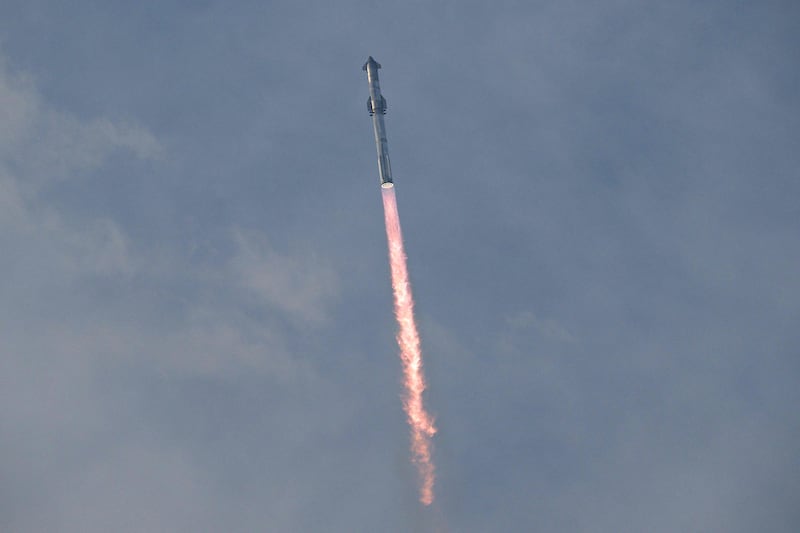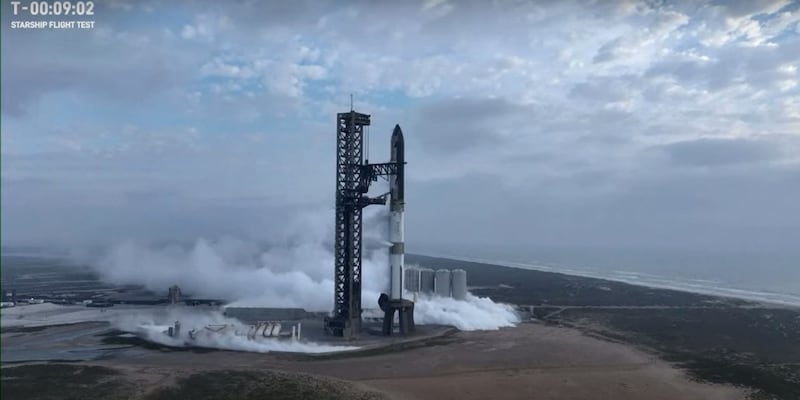SpaceX has successfully fired its deep-space rocket Starship into orbit for the first time with a flight test on Thursday.
The 122-metre spaceship, which consists of the Super Heavy booster and the Starship craft, blasted off from SpaceX's Starbase launch pad in Texas.
It was the third flight test by the Elon Musk-owned company.
"Starship reached orbital velocity! Congratulations SpaceX team," Elon Musk posted on X.
Starship, which SpaceX claims is the most powerful rocket built, could eventually help humans land on the Moon and carry them on deep-space missions.
It was important for the company to demonstrate Starship's ability to reach orbit, so commercial operations of the rocket could move closer.
While reaching orbit was a major feat, it failed to land back on Earth after re-entering the planet's atmosphere.
The Super Heavy booster was also meant to land in the Indian Ocean once it had delivered Starship to space but live footage cut off after it re-entered Earth's atmosphere, with SpaceX expected to provide an update on its status.
The flight was broadcast live on SpaceX's website and on X, with more than a million people tuning in.
Nasa administrator Bill Nelson congratulated the company on the flight.
"SpaceX Congrats to on a successful test flight! Starship has soared into the heavens," he said.
"Together, we are making great strides through Artemis to return humanity to the Moon — then look onward to Mars."
What went wrong in previous attempts?
SpaceX deliberately blew up the rocket during the first test flight last April after Starship failed to separate from the booster, causing it to fall towards the ground.
The second test flight took place in November, with several milestones achieved, including reaching the edge of space.
SpaceX's Starship fails second launch attempt
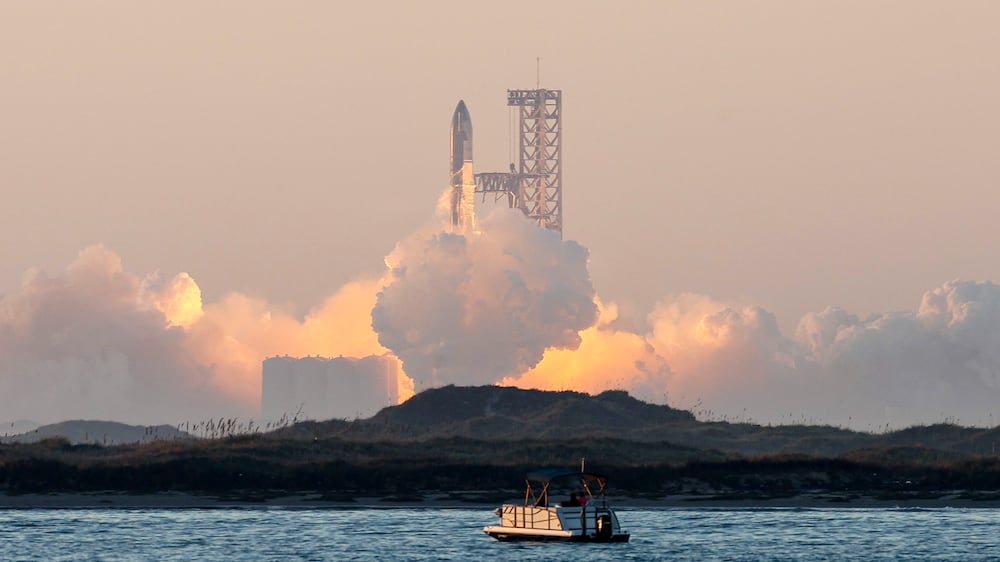
However, it failed due to an explosion after issues in its landing sequence, with engine and fuel system malfunctions thought to be responsible.
The spacecraft successfully separated from the booster and flew solo for seven minutes but broke apart after a leak, causing a fire that led to the loss of communication between the capsule and mission control.
The flight was terminated when the craft was at an altitude of about 150km.
Multi-planetary humans?
Mr Musk is developing the rocket in an attempt to eventually send humans to Mars and help mankind become a multi-planetary species.
However, he has more immediate commitments with Starship, including a $2.89 billion contract, signed between SpaceX and Nasa, to land humans on the Moon.
Starship was selected for the Artemis 3 mission, in which astronauts will attempt a lunar landing in 2026. If successful, it would be the first time people have set foot on the Moon since the final Apollo mission in 1972.
Mr Musk has already sold seats on the Starship, including to the Japanese billionaire, entrepreneur and art collector Yusaku Maezawa, who plans to be on board the first crewed flight to the Moon, taking eight artists with him as part of his dearMoon programme.
US billionaire Jared Isaacman is also working with SpaceX through his Polaris programme, a series of privately led space missions.
Mr Isaacman will serve as commander on the Polaris III mission, the first crewed orbital flight on the Starship rocket.
